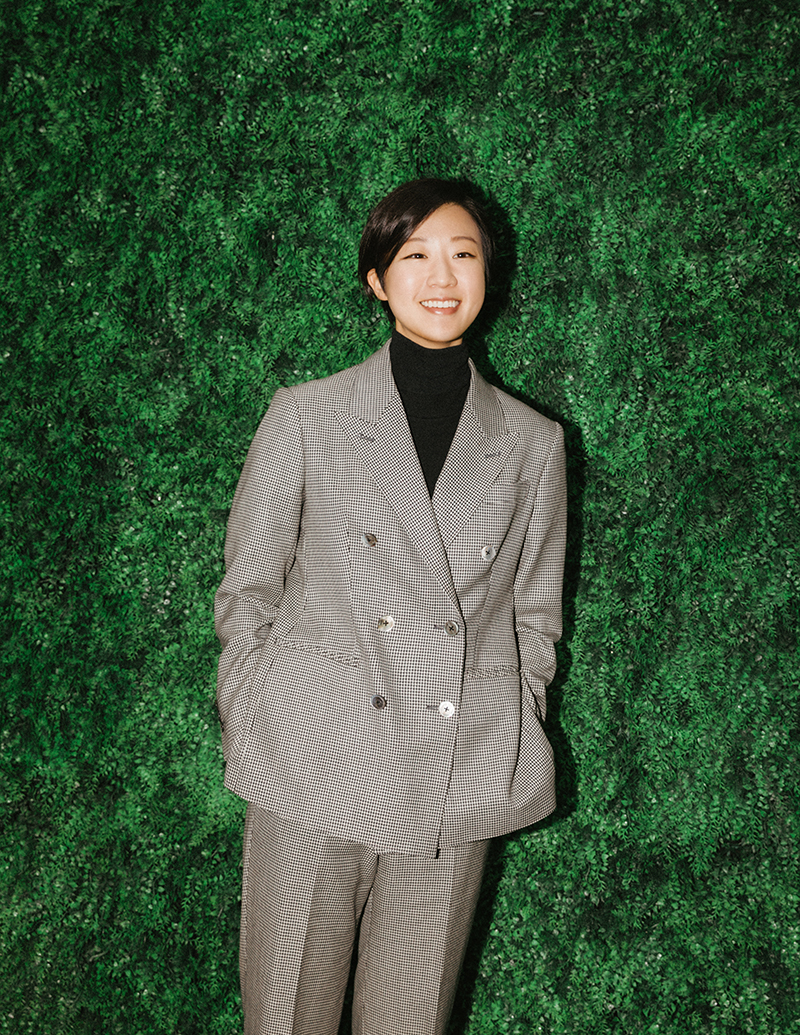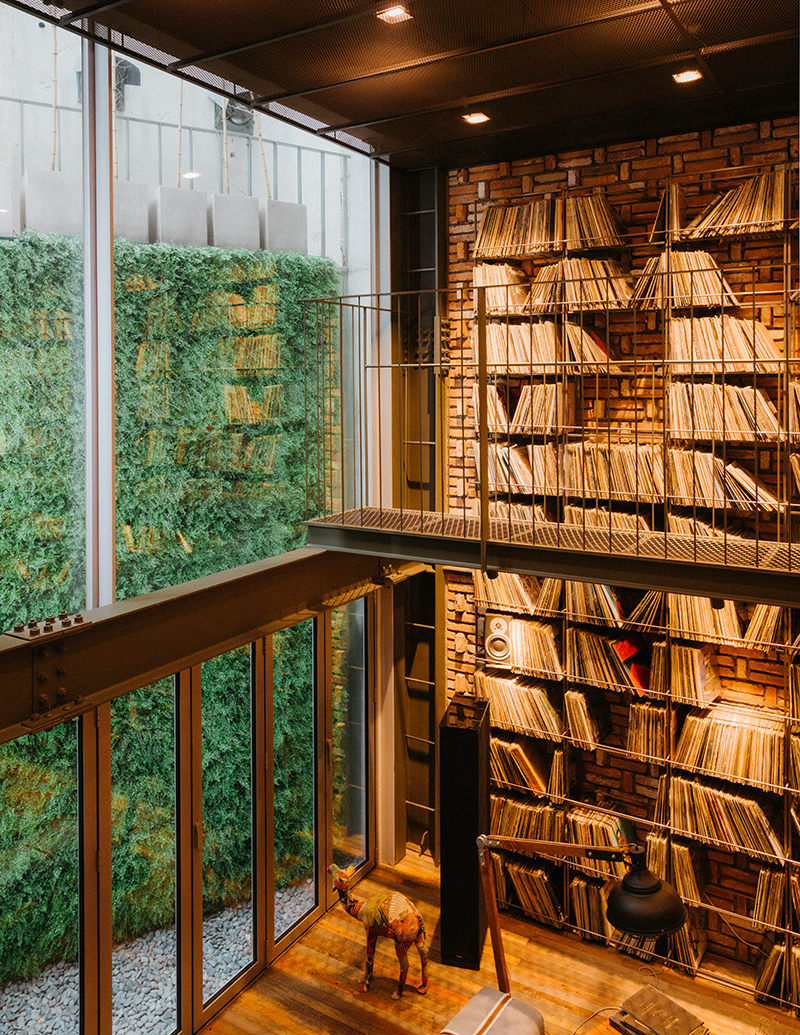INTERVIEW
Building homes for equalityMelody Song, Architect
Why don’t we value household labor like we do with other types of work? Why are kitchens and laundry rooms always located deep within the house? Melody Song, who received her Bachelor’s degree in Anthropology from New York University and her Master's in Architecture(co-living architecture, to be exact) from Yale, says the stereotypes of gender roles derives from within people’s homes. Melody currently spearheads ‘bo-daa,’ a design/architecture firm with friends who come from different cultural backgrounds. Over a vibrant conversation, she revealed her thoughts on houses and their relation to women.

- Q. Is Melody your real name? This could sound a bit stereotypical, but ‘Melody’ doesn’t really sound like an architect’s name. It feels like it’s more suitable for a musician. [laughs]
- A. My father is a songwriter who LOVES the Bee Gees. There’s a song by the Bee Gees called ‘Melody Fair’ which was the soundtrack of the movie ‘Melody’(1971). The movie portrays the protagonist, Melody, falling in puppy love with a boy. I guess my dad wanted me to live a life like Melody. [laughs]
- Q. Becoming a creative director at a major construction firm in Korea in your 20s has led you to the center of attention. Some media outlets here have introduced you as ‘a 90’s born architect with an Anthropology degree from NYU.’ Sounds quite charming for an official introduction.
- A. I feel really lucky, to be honest. Co-living, a style of architecture my firm mainly deals with, is an issue people talk a lot about these days. The timing was just right. It also showed how some major conglomerates are flexible enough to explore new areas of architecture.
- Q. ‘Bo-daa’ focuses on the concept of co-living, striving to build shared residential areas. What exactly is co-living, if you could explain to those who are not yet familiar with the concept?
- A. To be brief, co-living is short for ‘Community Living.’ It refers to a type of residence with communal spaces, such as shared lounges, community kitchens, co-working spaces. Some people do say that having communal areas is not enough to call it a co-living space, that it should operate community-building programs and/or events to reflect the true concept of co-living.
- Q. What does co-living mean to you personally?
- A. To me, co-living is not just a style of architecture but a form of life in that we are able to choose who to live with out of our free will instead of living in a given home and playing certain roles we are supposed to play. I can go even further to say that co-living also lets us face an existential question of how we are going to live our lives. Some people tend to have scatterbrained lifestyles even at home, right? They would cook, stream on Netflix, and go on Instagram all within a single space. When you do all of that in a single space, the border between life and work becomes blurry. Household labor is a particular case of that. Cleaning up homes and raising kids don’t get the proper recognition they really deserve because some people don’t acknowledge them as ‘real labor.’ How to fix that spatially, and how to separate work and life within a space are also examples of what the concept of co-living deals with.

- Q. So you’re saying a form of housing influences gender equality? Interesting. I work at home as well, but I’ve never linked the structure of my house and the value of household labor together.
- A. Yes, definitely. We are so used to the social structure of exploitation. In ancient Greece, all spaces were divided into two. ‘Polis’ and ‘Oikos.’ Polis was an area where ancient Greeks debated about politics, economy, and society. On the other hand, Oikos was dedicated to the necessities of life, providing economic activities for the Polis. While the former was a space for men with citizenship, the latter was edged out for women and slaves. The problem is that the societal and spatial divide in Ancient Greece still applies to this day. Public areas like living rooms are shown up front, while personal spaces like the kitchen and nursery are hidden in the back.
- Q. Listening to you, it suddenly occurred to me that stereotypes of gender roles are tied to houses we live in, as the spatial conception of the past when people divided labor based on their genders still continues to this day. I heard the ‘Tree House,’ a co-living house you designed, offers cleaning services. Is that right?
- A. Yes, but that really isn’t the perfect alternative. Attempts at servitization of household labor date back to the 19th Century. The commercial value of household labor needs to increase in order to truly tackle the core of this issue. To do so, we need to bring household labor out into the public area. Turning kitchens and laundry rooms into communal spaces, and more. Anything we do together creates higher economic value, compared to doing it alone.
- Q. When you think of globally renowned architects, most of them are men. Do you think there’s a glass ceiling within the industry?
- A. There’s an inside joke among us female architects. It’s that our heads won’t even reach the ceiling. [laughs] I think women in any industry go through similar issues.

- Q. The New York Times once published an article pointing out the issue of gender inequality within the architecture industry. The question was, “Aside from Zaha Hadid, how many female architects can you name?”
- A. The reason why renowned female architects seem so rare is partly due to the media. The media only sheds light on star architects like Frank Gehry. If you look closer, there are so many great female architects. Dolores Hayden, a former professor of mine and the author of ‘The Grand Domestic Revolution,’ is certainly one of them. Deborah Berke, Dean of the Yale School of Architecture, is another. If the media spent more time to take a look at their work, wouldn’t people’s perceptions change as well?
- Q. I hear you’re heading to Singapore soon. Where would you say your stomping ground is?
- A. I would say New York, Korea and Southeast Asia. I’m actually looking to find a space in New York where my colleagues and I can build a more integrated work environment. I’m also planning on taking classes on business administration in Singapore and I’m really looking forward to my time there, at a hub between the U.S. and Asia. I’m also excited to see what type of people I would get to meet.
- Q. Let’s apply the slogan ‘Girls go everywhere’ to your life. If you could ‘go everywhere’, where would you go?
- A. In Italo Calvino’s novel ‘Invisible Cities,’ Marco Polo, the explorer, talks about 55 different cities, which turn out to be one single city. If I could go anywhere, I would like to go explore the ‘invisible’ areas of the city and observe the physical and social aspects, because what we can’t see with our eyes is usually what we are most familiar with.

-
Text / Bora Kang
Photographer / Siyoung Song











